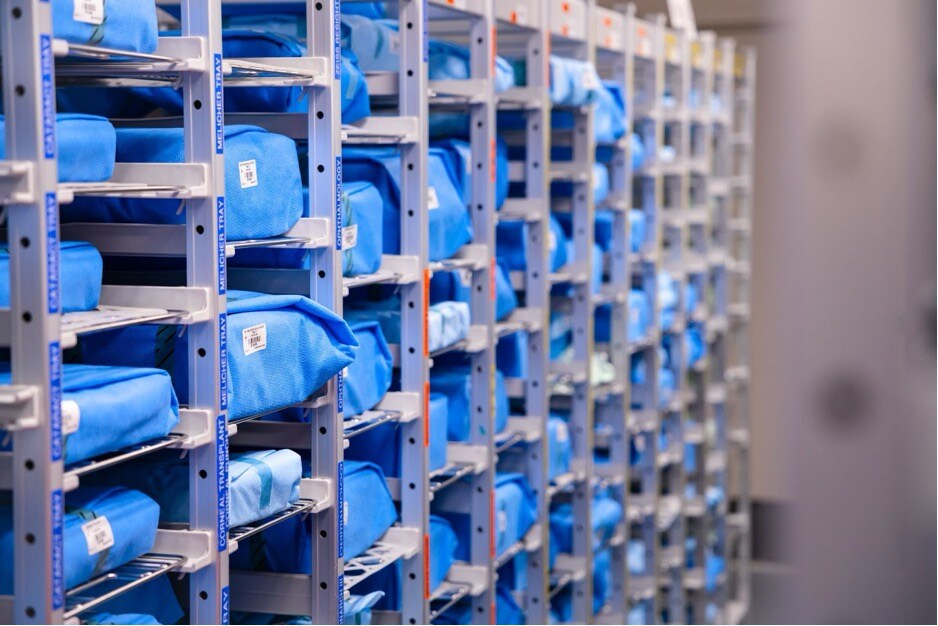Effective loaner instrument tray management is crucial for sterile processing departments (SPDs) and operating rooms to ensure patient safety, regulatory compliance, and operational efficiency. Managing loaner trays presents challenges such as tracking complexities, late arrivals, incomplete documentation, and sterilization delays. Without a structured system, healthcare facilities risk operational inefficiencies, delayed surgeries, compliance violations, and increased costs.
Implementing a comprehensive loaner instrument tray management solution can improve tracking, reduce errors, and enhance workflow efficiency. This article explores the challenges of managing loaner trays and how LoanerLink can transform the process.
Challenges in Loaner Instrument Tray Management
Loaner trays are essential for various surgical procedures, but managing them effectively presents several challenges:
- Late Deliveries: Vendors may deliver trays with little to no notice, leaving SPDs with limited time for inspection and sterilization.
- Incomplete Documentation: Missing or incorrect documentation makes it difficult to verify tray contents and ensure compliance with facility standards.
- Tracking and Accountability Issues: Without a structured system, loaner trays can be misplaced, increasing the risk of missing instruments or incomplete sets.
- Sterilization Delays: When loaner trays arrive late or are improperly labeled, processing times increase, delaying surgeries.
- Compliance Risks: Failing to track loaner instruments properly can result in non-compliance with AAMI and Joint Commission regulations.
These challenges create inefficiencies and increase the burden on sterile processing teams. However, an advanced loaner instrument tray management system can streamline processes and enhance efficiency.
Best Practices for Loaner Instrument Tray Management

1) Implement an Electronic Tracking System
Utilizing an electronic loaner tray management system eliminates manual errors and improves traceability. A centralized system like LoanerLink allows SPDs to track tray arrivals, contents, and sterilization status in real-time, ensuring better control over loaner instruments.
2) Standardize Documentation and Vendor Communication
Facilities should establish clear guidelines for vendor deliveries, including:
- Required documentation, such as tray manifests and sterilization IFUs
- Deadlines for delivery before scheduled procedures
- Accountability measures for missing or damaged instruments
By enforcing standardized documentation, SPDs can ensure proper tray verification before processing.
3) Automate Loaner Tray Check-In and Check-Out
Manually logging loaner trays increases the likelihood of errors and misplacements. A digital solution like LoanerLink automates check-in and check-out processes, providing clear visibility into tray location, processing status, and return tracking.
4) Prioritize Pre-Sterilization Inspection
Inspecting loaner trays upon arrival ensures that all instruments are present, undamaged, and properly labeled before sterilization. Automated tracking solutions enable technicians to document missing or incorrect instruments instantly, improving accuracy.
5) Ensure Compliance with Sterilization and Regulatory Standards
Loaner trays must meet strict sterilization protocols before use. SPDs should implement:
- Time-stamped tracking for each sterilization cycle
- Electronic documentation to verify compliance with AAMI and Joint Commission standards
- Alerts for incomplete or improperly sterilized trays
Integrating an automated solution helps SPDs reduce compliance risks and maintain consistent sterilization practices.
How LoanerLink Enhances Loaner Instrument Tray Management
LoanerLink is a comprehensive loaner tray management system that simplifies tracking, documentation, and compliance. Key features include:
- Real-Time Loaner Tray Tracking: Provides visibility into tray arrivals, processing status, and return deadlines.
- Automated Documentation Management: Ensures accurate tracking of vendor-provided documentation and sterilization history.
- Barcode and RFID Integration: Enhances tray identification and prevents misplacement.
- Compliance Reporting: Generates reports to meet regulatory requirements and ensure adherence to industry standards.
- Seamless Integration with CensiTrac®: Works in conjunction with CensiTrac for a fully automated instrument tracking system.
By leveraging LoanerLink, hospitals and surgical centers can improve efficiency, reduce the risk of lost or incomplete trays, and enhance compliance with regulatory requirements.
Conclusion
Effective management of loaner instrument trays is crucial for ensuring surgical readiness and patient safety. Without a structured process, SPDs face increased risks of missing instruments, delayed sterilization, and compliance violations. Implementing LoanerLink enables healthcare facilities to streamline tracking, automate documentation, and improve efficiency.
To learn more about how LoanerLink can enhance your loaner instrument tray management, visit Censis Technologies today.
FAQs
- What is loaner instrument tray management?
The systematic process of tracking, documenting, sterilizing, and managing surgical instrument trays temporarily provided by vendors. This includes receiving, inspecting, processing, using, and returning these specialized instruments while maintaining safety and compliance standards.
- What are the regulatory requirements for loaner instrument trays?
Loaner trays must comply with AAMI and Joint Commission standards, requiring proper documentation, adherence to manufacturer sterilization instructions, time-stamped tracking, and complete traceability. Facilities must maintain electronic documentation to verify compliance and avoid regulatory violations.
- How does LoanderLink improve loaner tray management?
LoanerLink provides real-time tracking, automated documentation management, barcode/RFID integration, compliance reporting, and seamless integration with CensiTrac. These features streamline processes, reduce errors, prevent lost instruments, and maintain regulatory compliance.


